The Galveston Hurricane And The Cape Verde Season
The Origin of The Hurricane.
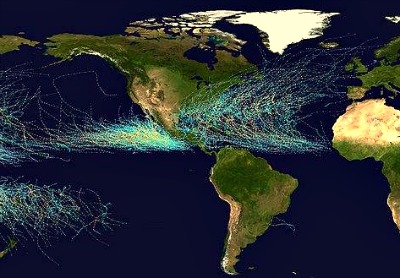
Where did the Galveston Hurricane originate?
The Cape Verde Islands are an island chain. They're about 350 miles west of Africa’s, Gambia coast.
The geographic setting of these islands had everything to do with the Great Storm.
Cape Verde Season refers to tropical storms and hurricanes developing near these islands. They may be called Cape Verde type storms or hurricanes.
The distinguishing characteristic of Cape Verde storms are direction of travel: West, North West, The direction of US and Canadian mainland coast.
August and September strong westerly winds cross Africa. In passing absorb heat energy and moisture. These winds move out to sea passing the Verde islands. The air mass tends west on easterly Trade winds.
The tropical Atlantic feed more heat and moisture to these storms. A devils brew for a Galveston Hurricane.
There are no land masses interrupting these storms until the Caribbean. Or mainland Americas coast.
The Galveston Hurricane of 1900 began this way.
The Storm Detected
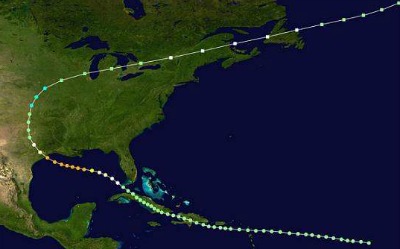
A storm had been observed east of central Bahamas. August 27, 1900. Ships logs noted winds: south, south east at 25-31 mph.
Six days later, September 2, the storm landed on Hispaniola.
Sept., 3, it struck Cuba as a tropical storm.
Sept., 6, the storm was reported north of Key West.
One day later it was one hundred seventy miles south of New Orleans. Louisiana Weather Bureau reported extensive damage. Most of it occurred on the Mississippi, and Louisiana Coast.
Warnings of what would be the Galveston Hurricane would never be relayed. The powerful winds of the Great Storm knocked down telegraph and telephone lines.
Calm Before the Storm
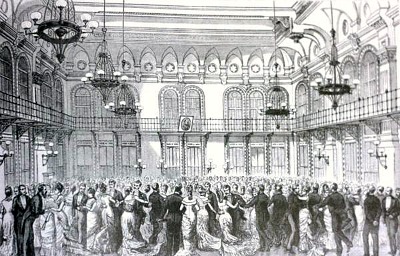
September 7, 1900. People of Galveston were in a festive mood. After a long hot humid summer cooling winds came from the north. Outer bands from a 'typical' storm brought unusually long rolling swells. These seemed to invite beach goers to cool off.
Islanders enjoyed their prominence. They had every right to. Galveston was poised to become the New York City of the south. Perhaps even the Wall Street of the south.
People of ability lived here. And those who engaged with them prospered. It was a cosmopolitan city. In 1900 it was also one of the richest cities in America.
Galveston was the largest city in Texas. And the first city in Texas to have a: grand piano; telegraph; electricity; gas lighted streets; sidewalks; paved streets, and train service to all US destinations. It was also home to five of the largest banks in Texas.
She had the most vital seaport between New York and San Francisco. 70% of all US cotton shipped out of the Port of Galveston. Each year a thousand ships made Galveston, Port of Call.
One day before the Galveston Hurricane. The Galveston County Daily News reported a population of 37,789, a growth rate of 30% in ten years.
Galveston was a prosperous Island.
Islanders had a remarkable ability. They could find success in the most dire of circumstances. They had demonstrated this since 1818. In 1900 that ability would be put to the ultimate test.
Whether being settled by a pirate; a Texas Revolution; the Great Fire; Yellow Fever epidemics, or two standing Army's, the people of Galveston commanded a creative spirit. The islanders were a phenomenon.
Off The Galveston Coast
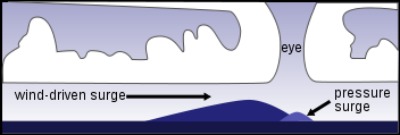
The Great Storm crossed the Gulf of Mexico at 10 mph.
The Gulf water had been super heated by the hot summer. Temperatures had been 95° with 95 % humidity.
Traveling slowly it absorbed massive amounts of heat energy and moisture. These factors caused rapid intensification of the storm. It was now fueled to Category 4 hurricane (Category 5 being the strongest).
The Galveston Hurricane was in full force.
Below the rotating eye of the Great Storm air pressure was reduced. This low pressure elevated the oceans surface. Hurricane force winds pushed this ocean dome forward.
Ships near the Galveston Hurricane raced up then down 120 foot swells. Sailor’s ears popped from the rapid changes in elevation!
Just one year earlier in 1899, the first wireless transmission on earth crackled across the English Channel. In 1901 the first permanent wireless station was built.
For all practical purposes, wireless ship to shore telegraph did not exist. The immense danger heading towards Galveston Island would never be transmitted.
The Galveston Storm continued west, north west. The raised ocean surface piling up water as it moved. All of it destined for shallow coastal waters.
Isaac Cline, Chief Meteorologist
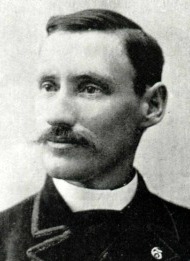
There was hardly concern of a major Galveston Storm. The islands Chief Meteorologist Isaac Cline, stated as much.
Isaac
Cline scoffed at the very suggestion Galveston could be seriously
harmed by a major storm. He considered such thought 'An absurd
delusion'.
He
even built his house near the beach. Isaac took prudent measures to
elevate it. He built it just above the high water mark of the last
Galveston Hurricane in 1893. He then declared it 'storm proof'!
That hurricane missed Galveston by hundreds
of miles.
Isaac
was an educated man, a Meteorologist as well as Medical doctor. He knew
the science and technology of weather. He had complete faith in his
instruments: Barometer, Thermometer, and Hydrometer to measure humidity.
These
rudimentary instruments and ‘looking around’ were the technology of
weather forecasting. However intelligent, his was blinded by his
confidence.
On September 7, 1900, he made his observations. He had taken exact atmospheric measurements.
Dutifully he raised the storm warning flag. This flag suggested minor flooding was likely.
One thing troubled Isaac Cline
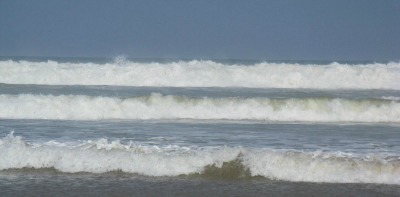
There were strong winds blowing from the north at 13-18 mph. During such times tides were low. This tide was four feet higher - in spite of opposing winds.
Isaac Cline's younger brother, Joseph Cline, lived with his older brother. He was also a meteorologist.
The next morning, September 8, Joseph awoke at 4:00 AM. Looking outside he discovered the yard was flooded. Joseph alerted Isaac to this danger. He then returned to the weather bureau office to telegraph Washington.
Later Isaac would report he had gotten his horse and buggy. Then rode along the beaches alerting all to the danger.
But the beaches were inaccessible by this time. Witnesses to this were never found.
By 12:00 noon, bridges to the mainland were under water.
At 2:30 PM, Isaac realized the magnitude of events. He raised the Galveston Hurricane Warning Flag atop the Levy building.
Cut off from the mainland
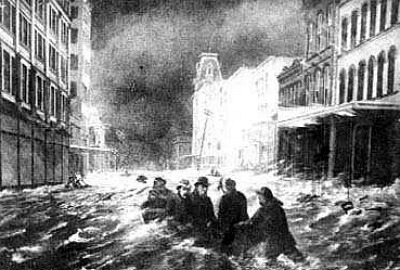
Water was rising in the streets. The three rail road trestles and Wagon Bridge to the mainland were under water. Waves pounded the street car trestle along the beach.
All communication to the outside world was lost. The islanders stood alone.
To the north of the island is Galveston Bay. To the south of the island is the Gulf of Mexico. These bodies of water converged over the island.
Escape was impossible.
The 37,789 residents were in the fury of a Category 4 Hurricane.
At 6:15 The Winds Shift

The Galveston Hurricane made landfall on the west end of the island.
Water levels had risen steadily from 3:00-7:30 PM. They rose about 2 1/2 ft. per hour.
At 7:30 PM the water level surged. In one breath taking instant, water levels rose four feet in four seconds. It was a shocking rise. The storm surge devoid of mercy had arrived.
150 mph winds heaved the 20 foot high storm surge over the island. All 44 square miles of Galveston had become ocean floor. Witnesses state all that could be seen was an occasional roof top.
The surge exerted millions of tons of force. On the islands east end disintegrating houses pulsed inward. Each house in its turn, crushed and cascaded into the next.
The cascading homes created a huge battering ram. Within the two story tall wreckage were people who sought refuge. Inside the houses in its path were people who could only wait.
Hurricane winds impelled anything to terminal speeds. Timbers, boards, glass, and steel. These missiles killed without discrimination.
Slate shingles were once installed for safety reasons. Now they shrieked through the sky. Witnesses watched stunned as fellow islanders were cut down in the streets by them.
Others witnessed families running for shelter. They struggled through violently flooding streets, against the cyclonic wind. One moment they were there. The next moment they were taken.
By next morning a 1500 acre areas, 1/2 of all homes had been obliterated. In their epic struggle 20% of the islanders lost their battle to see the sun rise.
Galveston at its zenith had been cut down.
To this day it is the greatest loss of life to natural disaster in U.S. history.
Galveston Counted Out?
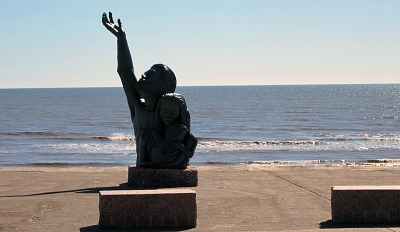
Galveston had been counted out before. But betting against the islanders is always a losing proposition.
Islanders would make a comeback. These men and women made things happen. They brought the island back!
In the years following Galveston went on to become one of the hottest destinations for the biggest names in entertainment history!
Leave Galveston Hurricane and return to Galveston Travel and Charm Homepage.
